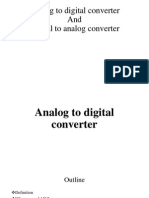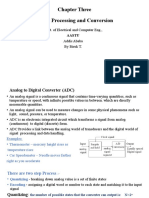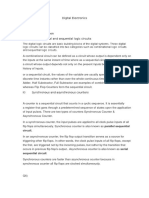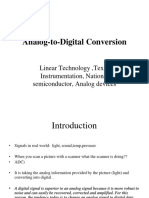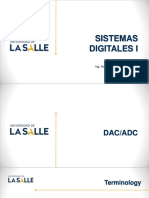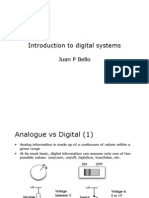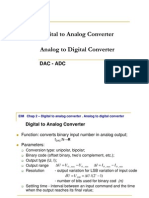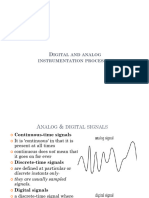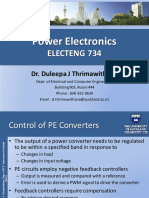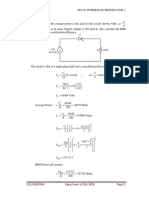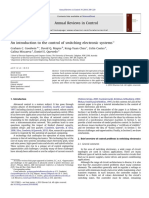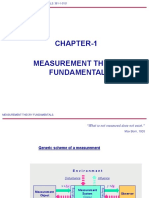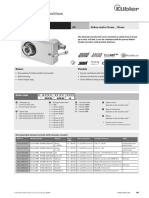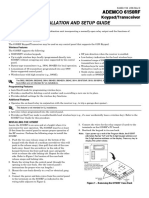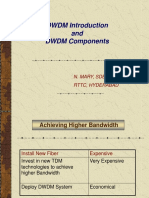0% found this document useful (0 votes)
78 views40 pagesSignal Processsing Element
The document discusses signal conversion and processing elements. It describes how analog signals are converted to digital signals using analog-to-digital converters and then processed using microcontrollers and computers. It also discusses how digital signals can be converted back to analog using digital-to-analog converters. Specific signal processing techniques like filtering are mentioned.
Uploaded by
kibrom atsbhaCopyright
© © All Rights Reserved
We take content rights seriously. If you suspect this is your content, claim it here.
Available Formats
Download as PDF, TXT or read online on Scribd
0% found this document useful (0 votes)
78 views40 pagesSignal Processsing Element
The document discusses signal conversion and processing elements. It describes how analog signals are converted to digital signals using analog-to-digital converters and then processed using microcontrollers and computers. It also discusses how digital signals can be converted back to analog using digital-to-analog converters. Specific signal processing techniques like filtering are mentioned.
Uploaded by
kibrom atsbhaCopyright
© © All Rights Reserved
We take content rights seriously. If you suspect this is your content, claim it here.
Available Formats
Download as PDF, TXT or read online on Scribd
/ 40









